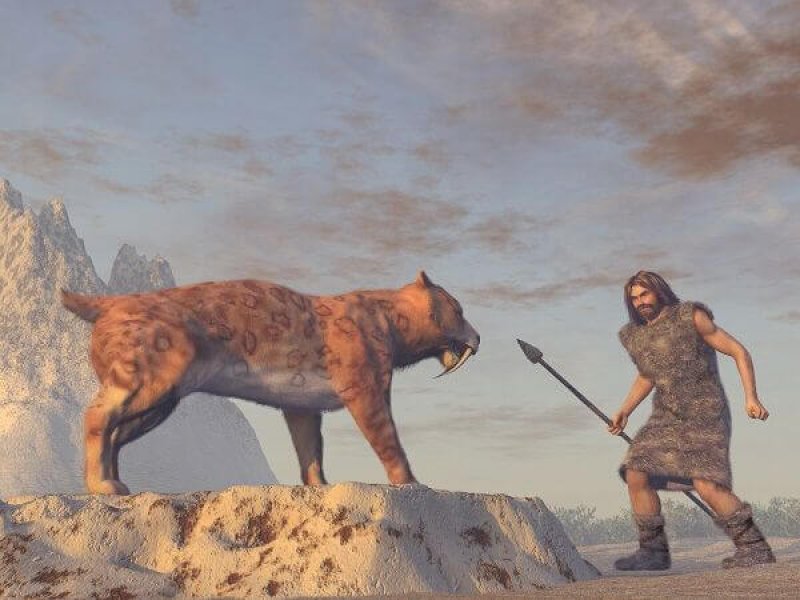Do you picture our hominin ancestors as hunters? I did. Not so much. “They were the hunted,” [paleoanthropologist Jeremy] DeSilva writes. Let’s take another look.
…
[De Silva:] Imagine you’re just about the slowest animal in your environment. You’re small. Lucy was about three and a half feet tall, a full grown adult Australopithecus… And she’s sharing the landscape with a Homotherium, a large saber tooth cat. They were ancestors of hyenas and were enormous. Some were ancestors of leopards and lions. All of these things would have gladly eaten an Australopithecus.
…
Baby chimpanzees and baboons cling to the fronts or wide backs of their mothers. Being upright means we have to physically carry our kids. So now Lucy is physically carrying her kid. Now, in her arms, she’s got this little fleshy meal for any carnivore, and she needs to go find food for herself in an environment littered with predators.
An ape that’s bipedal and isn’t nimble in trees is a recipe for extinction. But here we are. Something allowed us to pass through those rigors of natural selection. And it’s cooperation.































